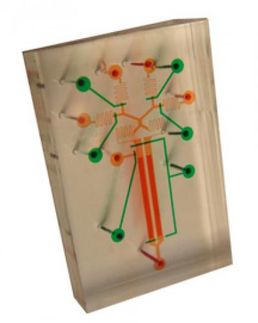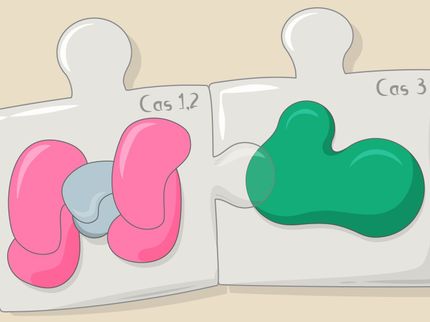Mars dust as a basis for life?
No problem for certain bacteria
An international research team led by ZARM scientist Dr. Cyprien Verseux has identified a cyanobacteria subspecies that seems to be best suited for use in a biological life support system that would allow humans to survive on Mars. The results are published in the journal “Applied and Environmental Microbiology”.

Illustration of a photobioreactor as part of a biological life support system for a Mars habitat.
Copyright: Joris Wegner / ZARM, Universität Bremen
At first glance, the inhospitable environment of the Red Planet seems to hold few usable resources for a life support system or food production. But the high-carbon (95%), nitrogen-containing atmosphere and red regolith soil, rich in iron and a wealth of other metals and minerals, are suitable for such bioprocesses – and the key are cyanobacteria: While on Earth they often appear as annoying blue-green algae and spoil our summer bathing pleasure, in the context of Mars they can be described as masters of survival. Fed with Martian dust and atmosphere, and with the capability of photosynthesis, some microorganisms within this phylum could produce oxygen and form biomass, which could serve various purposes – including food production.
"When humans go to Mars, we will need to provide them with large amounts of consumables: food, water, oxygen, and sometimes medication. And if our presence there is to be sustainable, all that cannot come from Earth, the costs and risks would be too high", said Dr. Cyprien Verseux, head of the Laboratory of Applied Space Microbiology at the Center for Applied Space Technology and Microgravity of the University of Bremen.
What makes the model bacterium so special?
The approach of designing a life support system based on cyanobacteria is not new to space exploration research, yet progress in the field has been slowed down by the lack of a shared model bacterium – the Cyanobacteria phylum counts thousands of species. Cyprien Verseux and his colleagues have now identified the cyanobacterium strain Anabaena sp. PCC 7938 as a highly promising one for a life support system on Mars. They suggest that it could be the shared model the field needs.
How they got to the results explained Cyprien Verseux: "We first preselected a few cyanobacterium strains based on knowledge already available. We then looked for insights into these strains’ genomic DNA, and finally compared them through a series of experiments in the laboratory. In short, we had two sets of criteria: The first pertained to the cyanobacteria’s abilities to feed on resources available on Mars. The second dealt with their abilities to support the growth of other organisms, such as edible plants and other bacteria, which would be highly valuable but could not use Martian resources as directly”.
For the latter point the team achieved, among other things, cultivating duckweed as a higher, nutrient-rich plant, using extracts from the cyanobacterium biomass as the only feedstock. “This plant grows extremely fast and is completely edible”, said Tiago Ramalho, also scientist at ZARM and first author of the study, “which makes it a prime candidate for agriculture on Mars”. What he is happy about: “As a fun fact, we actually isolated our duckweed from a stream in the landscape park of Bremen.”
Research perspective
With these findings, the science team hopes to boost the research on the so-called in situ resource utilization processes for Mars – meaning the utilization of resources that are native to the Red Planet. For Cyprien Verseux the perspective is clear: “Our work, and that of colleagues in this field, has brought promising proofs-of-concept. It seems that cyanobacteria could indeed be fed from Martian resources and, then, be used to feed other bioprocesses of interests. But knowing that this system could work at all is not enough. We need to improve it, assess whether it could be efficient enough to be worth integrating into missions to Mars and, if so, develop practical solutions – including hardware and processes.”
They also want to better understand the biological mechanisms which make the selected strain of Anabaena sp. PCC 7938 so valuable. “Things are just starting and the amount of research work left could be daunting. Fortunately, it is taking the direction of a highly collaborative effort: The number of teams contributing to cyanobacterium-based life-support systems is increasing rapidly”, said Verseux. The ZARM team hopes that its model strain will make it easier to compare results and build upon each other’s work.



















































